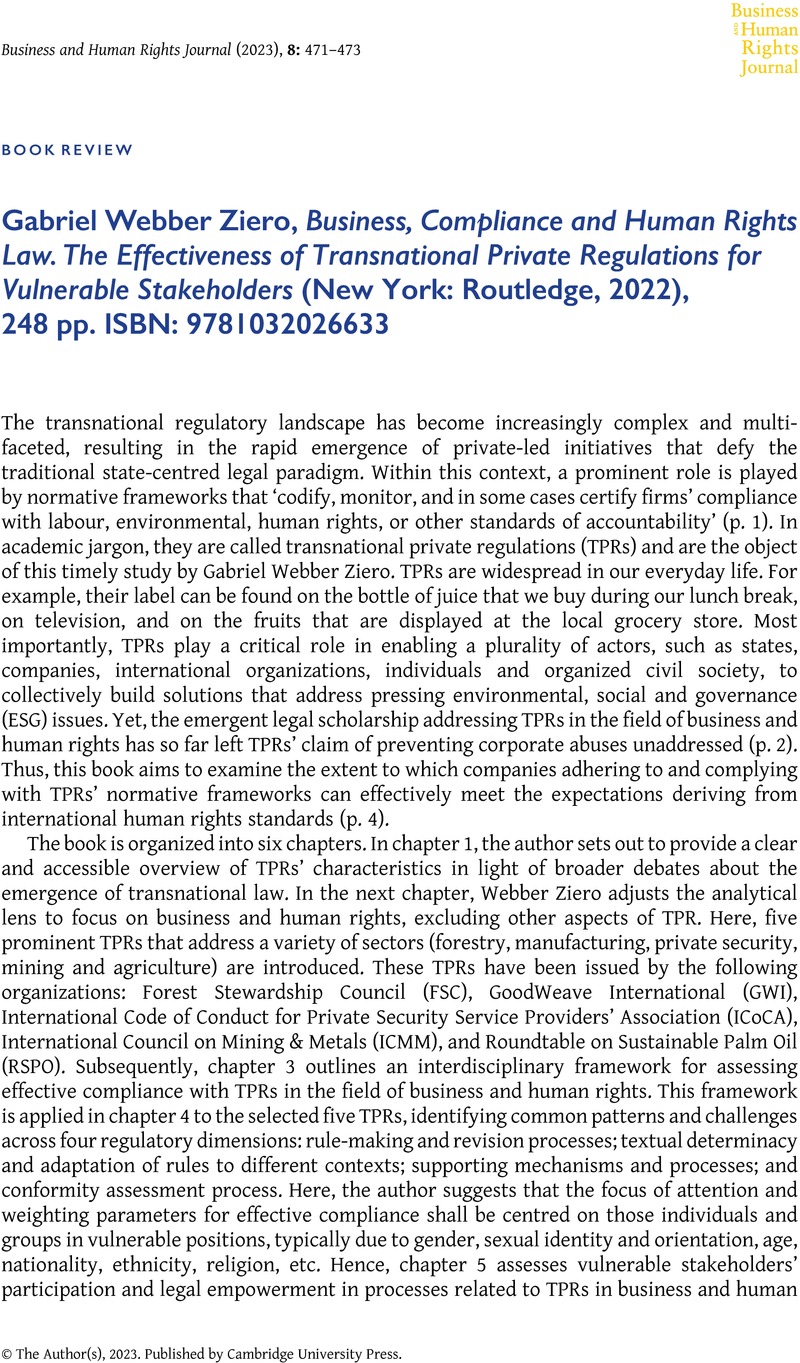No CrossRef data available.
Article contents
Gabriel Webber Ziero, Business, Compliance and Human Rights Law. The Effectiveness of Transnational Private Regulations for Vulnerable Stakeholders (New York: Routledge, 2022), 248 pp. ISBN: 9781032026633
Review products
Gabriel Webber Ziero, Business, Compliance and Human Rights Law. The Effectiveness of Transnational Private Regulations for Vulnerable Stakeholders (New York: Routledge, 2022), 248 pp. ISBN: 9781032026633
Published online by Cambridge University Press: 24 August 2023
Abstract
An abstract is not available for this content so a preview has been provided. Please use the Get access link above for information on how to access this content.

- Type
- Book Review
- Information
- Copyright
- © The Author(s), 2023. Published by Cambridge University Press
References
1 Braithwaite, J and Drahos, P, Global Business Regulation (Cambridge: Cambridge University Press, 2000).CrossRefGoogle Scholar
2 Bartley, T, Rules Without Rights: Land, Labor, and Private Authority in the Global Economy (Oxford: Oxford University Press, 2018).CrossRefGoogle Scholar
3 Parker, C and Nielsen, LV (eds.), Explaining Compliance: Business Responses to Regulation (Edward Elgar, 2011).CrossRefGoogle Scholar


